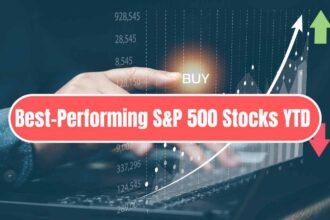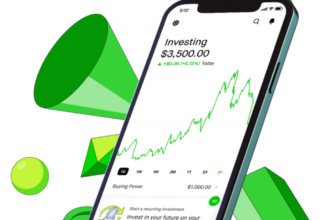Apple marked the 43rd anniversary of its 1980 initial public offering (IPO) on December 10, 2023. From a relatively unknown startup selling shares at $20/share to the most valuable public corporation in the world, with a market cap of more than $3 trillion, the stock of the tech behemoth has experienced a remarkable change since then.
Taking into consideration Apple’s five stock splits throughout the years, a shareholder who acquired 1,000 shares during the first public offering (IPO) would now possess an incredible 224,000 shares.
The IPO price drops to a meager $0.10/share after accounting for splits. An astounding $43 million would be sitting on that $20,000 investment from 1980, given Apple’s present trade around $193.
The Road to a 21st Century Tech Titan
In the years after Steve Jobs’ 1997 prodigal return and the Macintosh’s spectacular success, Apple has already divided its shares twice by June 2000. However, the true expansion was still ahead.
Apple began its meteoric rise to consumer electronics behemoth status with the introduction of the now-iconic iPod music player in 2001. As the iPod gained popularity around the world, Apple’s stock price increased by more than 800% by January 2006.
On the other hand, the modern smartphone era was defined with the arrival of the groundbreaking iPhone in June 2007. However, in the months after the iPhone launch, Apple’s stock fell more than 40%, despite all the excitement.
Before getting hammered by 35% in the global financial crisis later that year, the stock regained almost two-thirds of those losses heading into 2008. However, Apple managed to pull off an incredible comeback from the depths of the bear market.
Between 2008 and 2015, Apple shares soared more than 875 percent, driven by soaring sales of the iPad and other new items. With no signs of slowing down, the rocket ship continued to climb, adding another approximately 440% into 2022.
Warren Buffett Sees the Future
In 2016, the renowned investor Warren Buffett, who is renowned for his perseverance and self-control, began to acquire Apple stock.
Almost half of his enormous Berkshire Hathaway’s $363 billion equity portfolio—915.5 million shares—is now worth over $120 billion, thanks to his subsequent growth in the company.
Despite Apple stock’s dramatic ascent, Buffett has astonishingly kept all of his shares in the company.
Apple’s Dominance over Two Decades
Looking at Apple’s meteoric rise in important indicators over the past three 7-year periods can give you a better idea of how the company can keep going strong over the next seven years:
2001 to 2008
- Revenue up 370%
- Gross margins doubled from 23% to 35% 2008 to 2015
- Revenue up 523%
- Net income up 763% 2015 to 2022
- Revenue up 69%
- Net income up 87%
Even though Apple’s revenue has increased by roughly 100 times since 2001, the company has managed to scale its operations tremendously. Both Apple’s revenue and profitability fell in 2020 compared to 2021, which is a very unusual occurrence.
But with steadfast client loyalty and a services division that has grown at a rate of 40% per year since 2012, Apple appears to be well-positioned to keep thriving.
Bull Case – $1,577 per share in 2030
If Apple can keep its stock gains average of 35% till 2030, it still has a lot of potential to grow. In light of its enormous size, that appears to be quite an undertaking.
But if Apple can keep growing its services business, unveil its much-rumored $3,500 AR/VR headset in 2024, and significantly improve its AI skills, it just could pull it off.
Obviously, that also necessitates that Apple’s latest offerings, such the iPhone and the Apple Watch, maintain peak performance over this period.
A best-case or “bull case” scenario of $1,577 per share by 2030 doesn’t seem out of the question for one of the most dominating consumer technology companies ever developed, even though it is far from assured due to the challenges of innovation at scale.
Base Case – $920 per share in 2030
Consistent with its record over the last decade, a more cautious prediction would have Apple’s stock price increasing by about 25% each year until 2030.
In this most basic scenario, Apple succeeds with its headgear and AI projects, keeps its premium pricing power in the face of persistent iPhone demand, and keeps growing its ecosystem of services. If this plays out, Apple’s share price over the next seven years might be closer to $920.
Bear Case – $513 per share in 2030
On the other hand, Apple faces dangers that can significantly slow its growth. Growth might significantly slow down from levels the market has grown accustomed to if Apple has trouble replacing sluggish iPhone volumes, encounters tougher competition, or can’t come up with a big trigger other than small upgrades to current devices.
Think about the possibility that Tim Cook’s successor, who has not been announced yet, would falter in his role as CEO following Cook’s retirement.
If Apple’s stock price appreciation rate is cut in half from its historical pace, the shares could linger at $513 by the end of the decade, according to a bear case scenario.
The Road Ahead
Over the past seven years, Apple has created an unparalleled ecosystem and inspired brand loyalty. However, nothing is certain. Those who have stuck with it through the ebb and flow of its stock price have been richly rewarded.
If you’re ready to take a chance, Apple might keep growing faster than the market and hit $1,500+ per share by 2030.
The road ahead may be more difficult than Apple bulls anticipate, though, due to additional obstacles on the way and the fact that the law of huge numbers makes growth harder.
Whether Apple is able to deliver on its tremendous promise in the coming seven years and beyond is something that only time will reveal.








